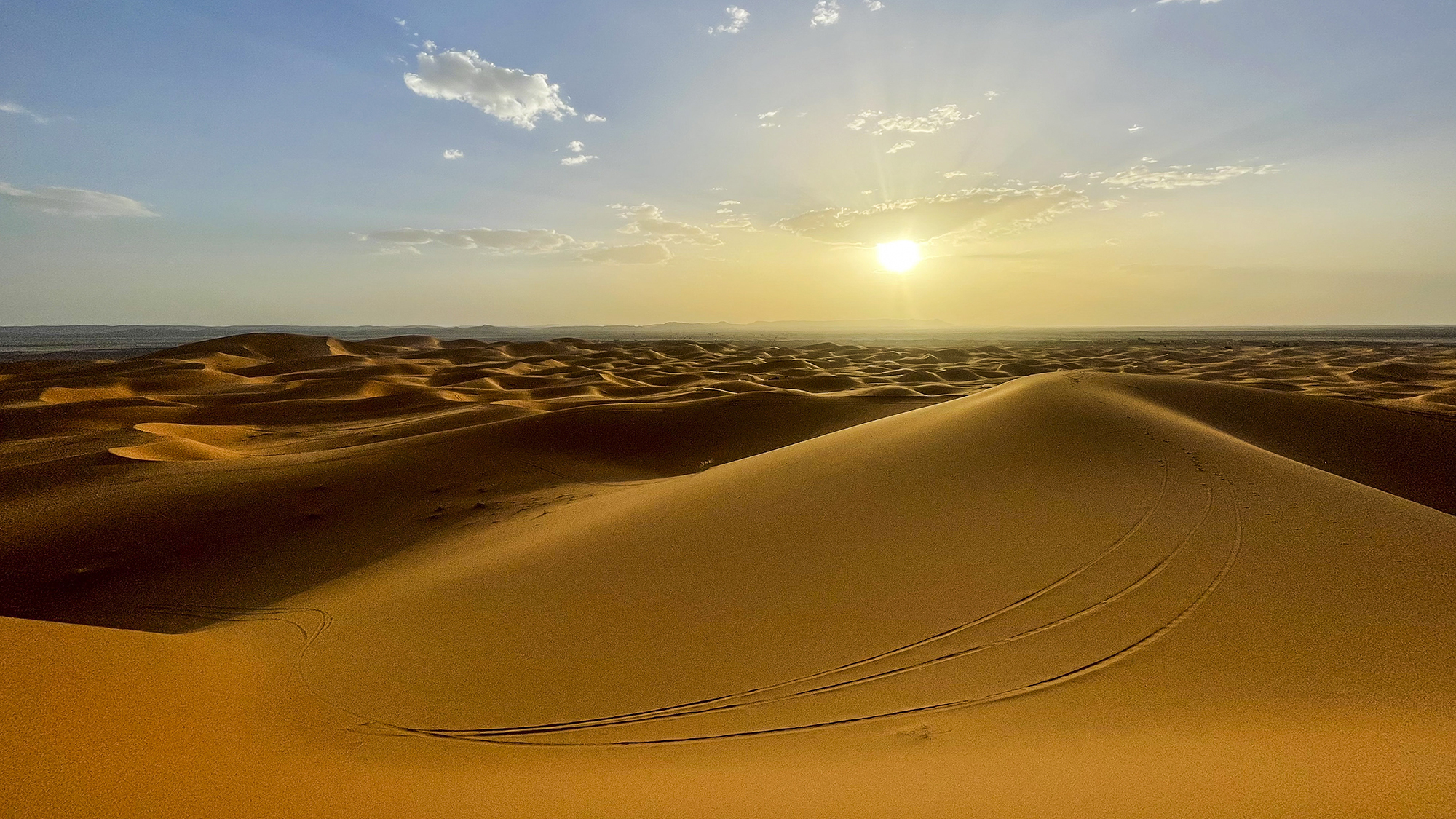

The desert’s enormous star dunes are mysterious structures. These sand dunes are found in some of Earth’s largest modern deserts, but also on the planet Mars and Saturn’s largest moon, Titan. Star dunes are giant sand dunes that get their name from the arms of sand and rock that spread down from a central peak. When viewed from above, they can resemble stars.
Scientists have now pinpointed the age of one of Earth’s oldest star dunes for the first time. The Lala Lallia star dune in southeastern Morocco is estimated to have formed 13,000 years ago, according to a study published March 4 in the journal Scientific Reports.
[Related: The Sahara Desert used to be green and lush. Then humans showed up.]
Star dunes are found in sandy seas across Africa, Arabia, China, and North America. They are believed to be the tallest dunes on the planet, with a star dune in China’s Badain Jaran Desert climbing to 984 feet.
Despite being very common today, evidence of star dunes have almost never been found in Earth’s geological record. The geologic record is like a time capsule made up of rock and sediment layers that allows geologists to get a glimpse of what the Earth looked like thousands of years ago. The absence of star dunes in rocks has puzzled scientists, since past deserts are a common part of Earth’s geological history, but not the types of dunes. Only one ancient star dune has been uncovered preserved in sandstone. It dates back about 250 million years and was found in present-day Scotland.

“This research is really the case of the missing sand dune–it had been a mystery why we could not see them in the geological record,” Geoff Duller, a geologist and Earth Scientist at Aberystwyth University in Wales, said in a statement. “It’s only because of new technology that we can now start to uncover their secrets.”
This new study used ground penetrating radar to peer into the internal structure of Lala Lallia. Its name means ‘highest sacred point’ in the Berber language and the dune sits in the Erg Chebbi area of the Sahara Desert, near the border with Algeria.
Researchers found that the sand pyramid reached its current 238 feet height and 2,296 feet width due to rapid growth over the past millennium as it slowly shifted towards the west. The oldest parts of the dune are 13,000 years old.
According to the study, the star dune likely formed at the same time as the Younger Dryas event. This was a very abrupt period of global cooling around 12,900 and 11,600 years ago, and it returned some parts of the planet to Ice Age-like conditions, before a rapid warming period.
The testing also revealed that the dune stopped growing for a period of 8,000 years. Some pottery found near the sites indicates that humans could live in the region that was not as dry as it is today. A period of additional rainfall or even an enlarged monsoon stabilized the dune before a large drought began.
Why is Lala Lallia moving?
The ground-penetrating radar showed the structure of the dune’s layers and revealed how the natural changes in the environment like rainfall and wind built it over time. The wind coming from several directions likely helped form the giant dunes. Using this structural data, they also determined that the Lala Lallia dune is moving west at a speed of about 1.6 feet per year. Since the dune was formed by winds coming from two different directions, it’s a third wind blowing in from the east shifting the dune slowly towards the west.
To determine the star dune’s age, the team used luminescence dating techniques to pinpoint the last time that minerals in the sand were exposed to sunlight. They did not look at when the sand itself was formed, but when it was deposited onto the dune.
[Related: World’s oldest known wooden structure pre-dates our species.]
“The grains of quartz have a property like a mini rechargeable battery,” Duller told The Guardian. “It can store energy that it gets from naturally occurring radioactivity. When we bring it back to the laboratory, we can get it to release that energy. It comes out in the form of light. We can measure that and the brightness tells us the last time the sand grain saw daylight.”
By looking at the amount of energy in the grains of sand, researchers could determine that it took about 900 years for the Lala Lallia star dune to form. It accumulates roughly 6,400 metric tons of sand annually, as the wind blows sand in the desert.
The techniques used in this study can be applied to other sand dunes to tell us more about Earth’s climatological history. Luminescence dating has already been used to discover the world’s oldest known wooden structure in 2023.
According to study co-author and sedimentologist Charlie Bristow of University College London, “Using ground penetrating radar to look inside this star dune has allowed us to show how these immense dunes form, and to develop a new model so geologists know better what to look for in the rock record to identify these amazing desert features.”
